Supermarkets are filled with processed and prepackaged food. The labels are supposed to show the list of all the ingredients inside each product. However, unless one has a degree in chemistry, it is extremely difficult to understand the hidden dangers behind each chemical present in a product.
“This book’s purpose isn’t to scare you, or to enrage you…I never wrote any of these stories to ‘take down’ any product. I always approached each product with nothing but curiosity and a desire to have that curiosity satisfied” says Patrick di Justo, author of ‘This is What You Just Put in Your Mouth’.
All the products mentioned in this book are part of your world and even if you don’t use them, you are better off knowing what is in them rather than not knowing.
Coffee is a startling example of a product which most of us drink without even knowing what chemicals go inside. According to Dr. James Duke, author of a groundbreaking work on all the natural plant chemicals, coffee alone contains more than a thousand chemicals.
Caffeine is certainly the most important chemical. This white powder is the reason why the world produces more than sixteen billion pounds of coffee beans per year. It is an alkaloid plant toxin which plants use to kill bugs. Caffeine stimulates us by blocking neuroceptors for the sleep chemical adenosine. When the sleep chemical is blocked by caffeine, the result is you remain awake.
Coffee also contains quinic acid which causes the burning sensation in your stomach and acetylmethylcarbinol. The latter comes in the form of a flammable yellow liquid which helps give real butter its flavor and is a component of artificial flavoring in microwave popcorn. Other chemicals present in coffee include Dymethyl Disulfide and Dicaffeoylquinic Acid, therefore it is not surprising that few coffee producers inform the public about these chemicals in their brew.
“Nescafe and Starbucks, just to choose two examples at random, nearly completely gloss over the chemicals in coffee on their websites. Their PR people are even less helpful, limiting their replies to things like ‘the finest coffee beans’ and ‘pure filtered water’” writes Patrick di Justo.
Red Bull is another popular beverage. Its high caffeine content is responsible for all the things this drink is supposed to do for you such as increase concentration and reaction speed, improve emotional state and boost metabolism. It also contains taurine, a substance originally extracted from bull bile in 1827. It is made now synthetically and its actual effects are pretty wide-ranging. It can act as a mild sedative and an age-defying antioxidant, it even has the potential to stabilize irregular heartbeats. Glucuronolactone is another chemical ingredient. To this day little research has been done on it but the people who drink Red Bull are convinced it fights fatigue and increases well-being.
Orbit white gum is made with styrene-butadiene, the same petrochemical rubber used to make automobile tires. This gum is supposed to whiten your teeth which explains the presence of Sodium Bicarbonate or baking soda, a plaque inhibitor and gentle abrasive that cleans teeth without damaging the enamel.
The author has also looked into the content of the Power Bar Protein Plus. It is interesting to know that one of the ingredients is Soy Protein Isolate which is a protein extracted from ground-up soy-beans, with the fats and sugars removed. This protein is rich with phytoestrogenes given to women during their menopause. Furthermore a high intake of soy protein has been linked to lower rates of coronary heart disease.
Another component found in these energy bars is Whey Protein Isolate which is a compound of globular proteins whose structure is similar to hemoglobin. Its main protein, beta-lastoglobulin serves essentially as a good source of amino acids for building other proteins.
The bar’s chewy texture is due to glycerin and its sweetness comes from high-fructose corn syrup and Maltitol Syrup. The latter triggers gas and bloating and can also produce a laxative effect so powerful that countries like Australia and New- Zealand require a warning label on foods that contain it. As for high-fructose corn syrup, this ingredient is found in most so-called health foods.
Other ingredients include Copper Gluconate which is supposed to fight a copper deficiency but a study has shown that it adds nothing to the diet. Calcium Phosphate which is supposed to be a performance enhancer is in fact a powdered bonelike mineral used to polish teeth and build hard tissue prosthetics.
These bars have a chocolatey coating. Chocolate coating can only be made with one type of added fat-cocoa butter but everything produced under the chocolatey label means that cocoa butter can be added to any other fat.
“PoweBars use fractionated palm kernel oil instead which is about as healthy as Elmer’s Glue- All” explains Patrick Di Justo.
The author also sheds some light on the following terms we often find on labels such as: fat free, nonfat, low fat and light or lite. According to the FDA, zero fat means anything from actually zero up to half a gram which means that four servings of zero fat food can actually contain up to two grams of fat!
“Light means that the food gets less than 50 percent of its calories from fat. If you buy a package of cookies that are one hundred calories per serving, and forty-nine of those calories come from fat, that is officially a light or lite cookie” writes Patrick Di Justo.
In the second part of the book, the author focuses on products we don’t put in our mouth. One interesting product researched by the author is April fresh Downy Fabric Softener. One of its main ingredients is Dihydrogenated Tallow Dimethyl Ammonium Chloride, a substance which is derived from rendered fat from cattle, sheep or horses! While researching this product, the author learned that old-fashioned laundry soap, being made of fats, tended to leave behind a thin film of lipids on the washed clothes whereas new laundry detergents didn’t leave that film, resulting in clothes that were marginally less soft. So detergent companies replaced laundry soap with a product designed specifically to coat your clothes with a thin layer of fat which cuts down the absorbancy of your towels precisely the reason you bought them in the first place.
Patrick Di Justo also researched a popular product we put to use on our skin. The Neutrogena Healthy Skin Face Lotion SPF 15 contains Hydroxyacetic Acid also known as “alpha-hydroxy”.
“It’s a corrosive acid that breaks apart the outer layer of skin, spurring new cell growth. While it may make you look younger, it can also make skin twice as vulnerable to sun damage, good thing Neutrogena adds SPF 15 sunscreen”.
The main sunscreen ingredient is a compound Octyl Methoxycinnamate which is a fairly recent addition to sunscreen lotions because the ozone layer used to stop UVB rays.
This lotion is also made with Benzophenone, a substance present in diesel exhaust. If inhaled or absorbed it may disrupt hormones and mess with your brain. Scientists do not recommend using it on children.
The author takes a hard look tempered with humor at fifty products which we use on a daily basis. Packed with shocking facts, this book is a must read if you want to know the truth about the content of the products we use. Its infotainment at its best and so much fun to read!
— Lisa.kaaki@arabnews.com
Exposed: The truth behind food labels
Exposed: The truth behind food labels

Where We Are Going Today: Tatemat Jastaniah

- Traditionally, tatema includes an array of small dishes such as cheeses, Hijazi mish, flavored olives, cold and spicy pickles, lupini beans, balila, areeka, masoub, mutabbaq and kabab meeroo
If you ever find yourself in Jeddah craving authentic Hijazi flavors, check out Tatemat Jastaniah located in Al-Salamah district.
This cozy store offers a nostalgic culinary journey centered around the traditional Saudi concept of “tatema,” a cultural tradition referring to a light, comforting meal typically enjoyed late in the evening, often shared with bread and small savory dishes.
Today, it remains a cherished ritual, especially in Makkah, Madinah and Jeddah, valued for its simplicity, affordability and deep cultural roots.
The Saudi mezze-style breakfast or supper includes creamy labneh with mint, olives, pickles, spreads and foul. At Tatemat Jastaniah, this humble tradition is elevated with a creative, modern twist.
The shop’s signature breakfast platters are a highlight and it also offers homemade goods such as artisanal marmalades, tahini and herbal teas.
Traditionally, tatema includes an array of small dishes such as cheeses, Hijazi mish, flavored olives, cold and spicy pickles, lupini beans, balila, areeka, masoub, mutabbaq and kabab meeroo.
It is often accompanied by a selection of classic sweets such as laddo, labaniyah, hareesa, semsamiya, tahini halva and homemade jams.
This spot is especially popular during Ramadan when demand for traditional foods and social gatherings peaks.
Some Jeddah locals set up tatema buffets for wedding celebrations, Eid and casual breakfast or dinner spreads.
When you step into the store, the air is filled with the scent of freshly baked bread and the warm buzz of local conversations.
For more information, visit @tatematjastaniah on Instagram.
Where We Are Going Today: ‘Noho Deli’ – New York–style deli sandwiches in Riyadh

- A must-try side is the Beefy Cheese Fries (SR29) — warm, cheesy, and topped with tender beef, they’re as indulgent as they sound
If you’re craving New York–style deli sandwiches in the heart of Riyadh, Noho Deli is your go-to spot. With freshly cooked and sliced meat prepared in-house and a menu that balances comfort and quality, this place has quickly earned a spot among my top favorites in the city.
We tried a variety of sandwiches, and every single one delivered on flavor. The Reuben Pastrami, priced at SR44 ($11.73), had that perfect balance of smoky meat and tangy dressing.
The Grilled Chicken Pesto (SR36) was fresh and herbaceous, while the Noho Roast Beef (SR38) and Mustard Roast Beef (SR3) brought bold, satisfying flavors layered between perfectly toasted bread.
For something lighter, the Mozzarella Sandwich (SR34) was creamy and well-seasoned, and the Okra Kale Salad (SR35) offered a refreshing, earthy break from all the richness.
A must-try side is the Beefy Cheese Fries (SR29) — warm, cheesy, and topped with tender beef, they’re as indulgent as they sound.
The pricing is surprisingly reasonable given the high quality of the ingredients, and the portions are filling without being overwhelming. The branding and dine-in vibe are also on point — stylish yet casual.
One downside, though, is the seating area, which can feel a bit cramped and not ideal for groups or longer stays. It’s more of a grab-and-go or quick-bite kind of place than a spot to linger.
Still, the food speaks for itself, and if you’re in Riyadh and craving deli-style goodness done right, Noho is definitely worth a visit.
For more, check their Instagram @nohodeli.
Where We Are Going Today: ‘Cuz Balcony’ restaurant in Dammam

If you’re looking for a quiet morning with sea breeze and a cozy brunch, Cuz Balcony in Dammam is a charming hidden gem. Located on a sunny rooftop with a panoramic view of the sea, the restaurant offers a warm, homey ambiance that feels more like a family gathering than a commercial space. The staff — especially the owners — are incredibly kind and make you feel instantly welcome.
Their CUZ platter for SR53 ($14.13) is perfect for sharing — a diverse spread of creamy labneh, fresh cheese, flavorful eggplant dip, and other savory sides, served with warm, soft bread.
The lahm b’ajin (SR54) was equally impressive — a freshly baked flatbread topped with spiced minced meat, caramelized onions, arugula, pomegranate seeds, and toasted nuts. The mix of sweet and savory flavors with a crispy crust makes it one of the most memorable dishes on the menu.
The French toast (SR53) was rich and satisfying — soft inside, crispy outside, and lightly sweetened with a smooth cream topping.
The avocado egg (SR54) came layered over warm bread and greens, with balsamic glaze and assorted dips on the side — light, creamy, and balanced.
To drink, the karak (SR14) stood out with its deep flavor and traditional serving in a classic black teapot, while the hot Americano (SR14) was bold and well-brewed.
One downside, however, was that several dishes were already sold out by the time we arrived late morning. With such a focused menu, it would’ve been great to explore more, especially on a first visit. Hopefully, they’ll expand availability as the place continues to grow in popularity.
Still, everything we tried was truly delicious, the staff was exceptionally warm, and the seaside view made it all the more special.
For more information, check their Instagram @cuz_ksa.
Where We Are Going Today: ‘Hashem’ restaurant in Jeddah

Hashem restaurant, established in 1956, is one of Amman’s most iconic gems. It has finally made its way to Saudi Arabia with the first branch open in Jeddah’s Al-Rawdah district, bringing the legendary flavors of Jordanian street food with it.
Whether you want a sunrise breakfast or are on a midnight snack run, their doors are open for you.
The restaurant serves large portions made with fresh ingredients. Their quick service and buzzing energy will make you feel right at home.
Just like in Amman, no menu is needed. Just take a seat and the team will start you off with a full spread of the essentials. You can ask for eggs (fried or boiled), olives and pickles, or their house-made spicy sauce.
I ordered the usual Jordanian breakfast, including the famous creamy hummus topped with minced meat, olive oil and pine nuts, and crispy stuffed falafel.
I also ordered their fatteh and foul. It was warm, seasoned, and went well with fresh bread and special Jordanian spicy sauce made of lemon, chilli and garlic. I also asked for a glass of mint tea to round it all out.
Located in one of Jeddah’s most vibrant neighborhoods, Hashem offers a welcoming, family-friendly atmosphere perfect for both dine-in and takeaway.
Whether you’re a nostalgic Jordanian or a curious first-timer, it’s a great spot for a hearty meal.
Moma’s Garden: A Saudi family’s recipe for love

- Al-Mumen family blends culinary creativity, tradition in cozy Alkhobar restaurant
- Teamwork brings comfort through home-like decor, modern twist on Arabic flavors
ALKHOBAR: In a quiet corner of Alkhobar, Moma’s Garden has become more than just a restaurant — it is a family-run establishment at which hospitality is as important as the food itself. With another branch in Dammam, the restaurant is entirely operated by the Al-Mumen family, whose members take on various roles to run its daily operations.
The atmosphere of Moma’s Garden is intentionally just like home. Sunlight filters through white curtains, casting a warm glow over wooden tables and lush greenery. The walls are adorned with framed family photographs, reflecting a history deeply intertwined with the restaurant’s identity.

Moma’s Garden started as a small venture in a Dammam hotel, a modest space that helped to lay the foundation for what would later become a larger family project.
Abdulfattah Al-Mumen, the father, said: “At first we opened Moma’s Garden in a hotel in Dammam. It was a small place, but it was big in our hearts, and that’s where our story began. Now, with our second branch in Alkhobar, our journey continues.
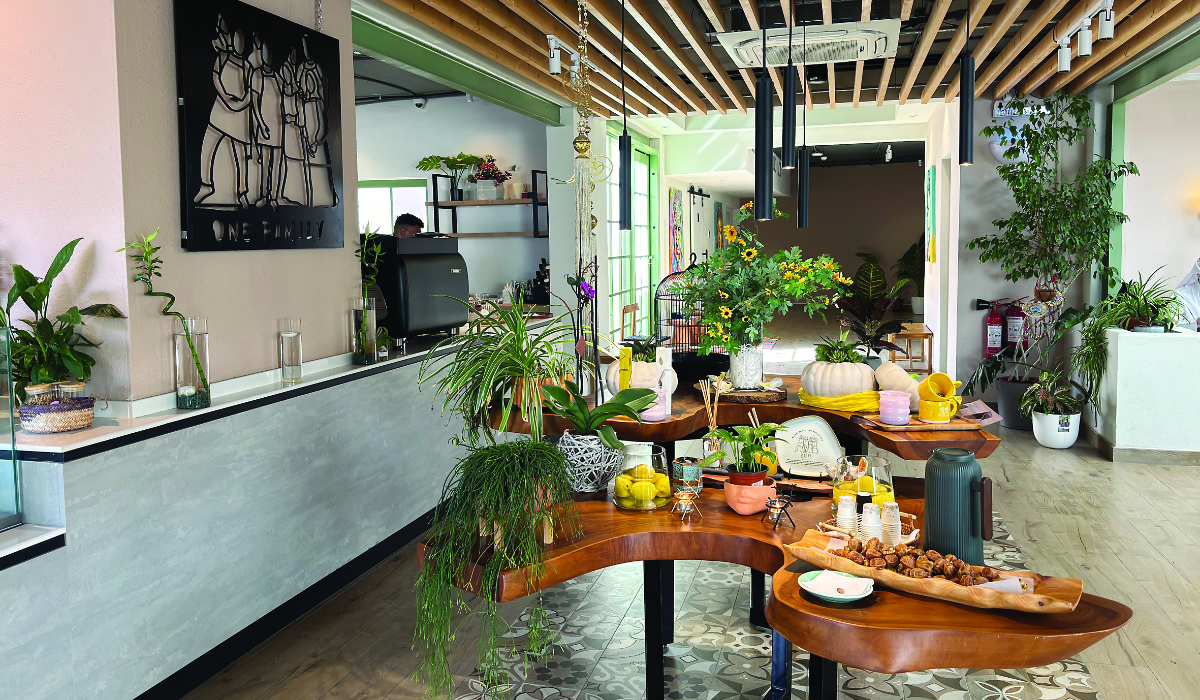
“It is built on the passion of our family, my wife’s creativity, and our children’s experiences from traveling and living abroad. They learned to cook for their friends, and today they are capable of managing businesses, finances, architecture, and law.”
And while each member of the family brings something to the table, Al-Mumen said: “The mastermind behind all the creativity is my wife. In the end we are simply a family that enjoys cooking and being together.”
We are not just running a business. We are sharing our passion, our creativity, and our love for food. At the end of the day what matters most is that we continue to do what we love together.
Abdulfattah Al-Mumen
Abdulhadi, their young son, told Arab News: “I handle the front desk, my mother oversees the menu and its development, Hassan manages finances, and Bayan handles legal matters.”
However, the roles are not set in stone and each family member steps up as needed. Abdulhadi added: “My father and I collaborate on architectural and design aspects … Sometimes my father is a waiter and sometimes I cook in the kitchen. We all share responsibilities.”
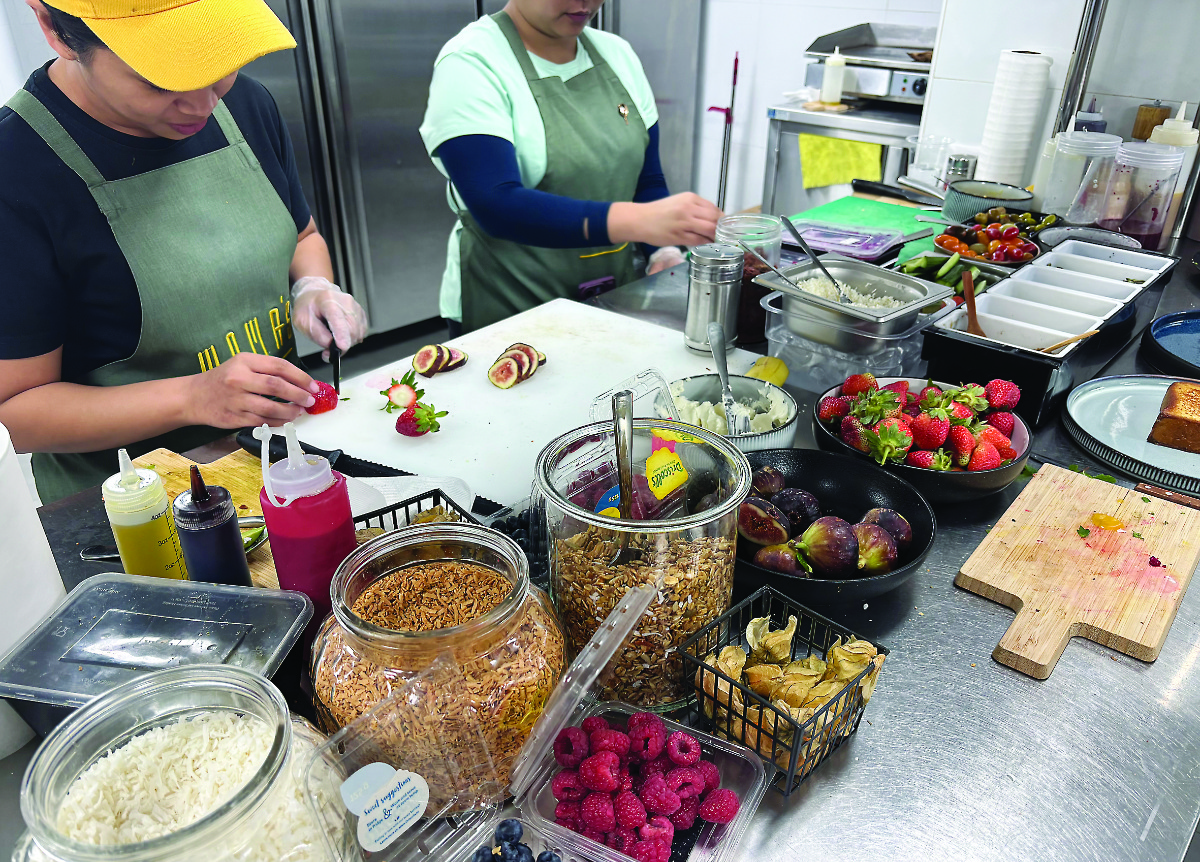
At the heart of Moma’s Garden is Intessar, the matriarch who personally oversees the menu and ingredient selection, ensuring that every dish meets her high standards.
She said: “Finding the right ingredients can be difficult. Every day I go out myself and handpick what we use. Maybe that’s why this place feels like home to so many people. Even the local vendors recognize me now and know I won’t settle for anything less than top quality.
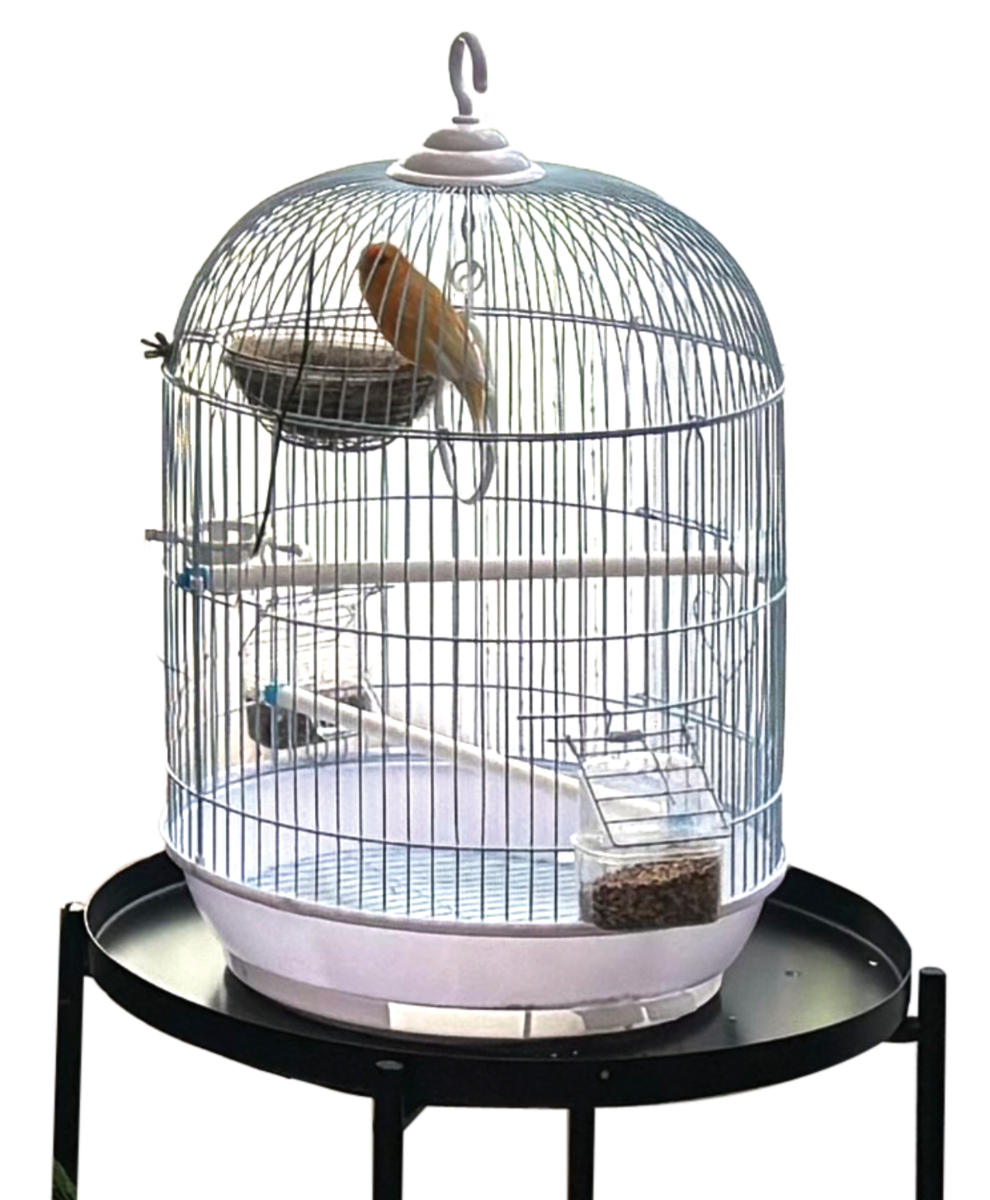
“Our dishes are not traditionally Arabic, but we’ve given them a modern twist infused with Arabic elements, like shakshuka and date toast.”
This hands-on approach and commitment to fresh ingredients help define Moma’s Garden’s philosophy.
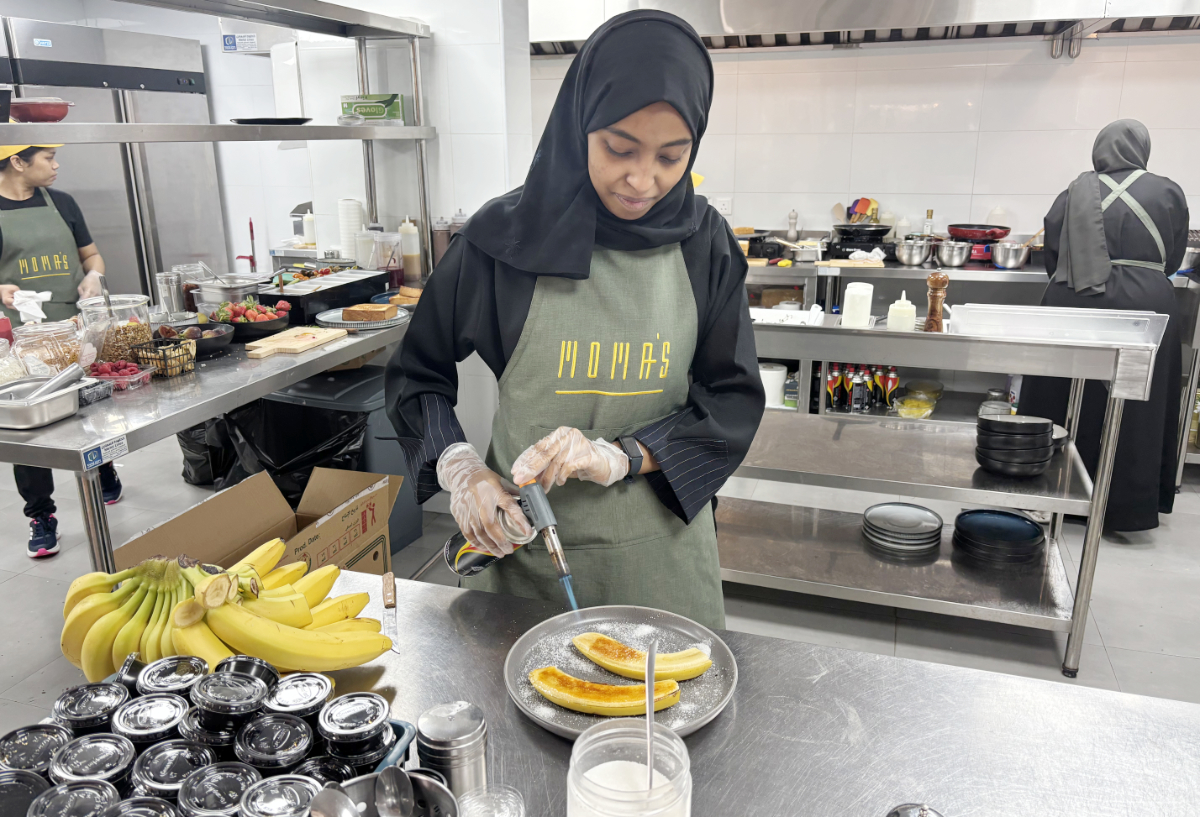
The setting at Moma’s Garden is carefully designed to create a welcoming and relaxed environment. The wooden tables, soft pastel hues, and an abundance of plants contribute to an atmosphere that encourages guests to unwind and enjoy their meal.
A unique feature is the wishing tree, where visitors leave handwritten notes — a symbol of community and connection that has become an integral part of the restaurant’s charm.
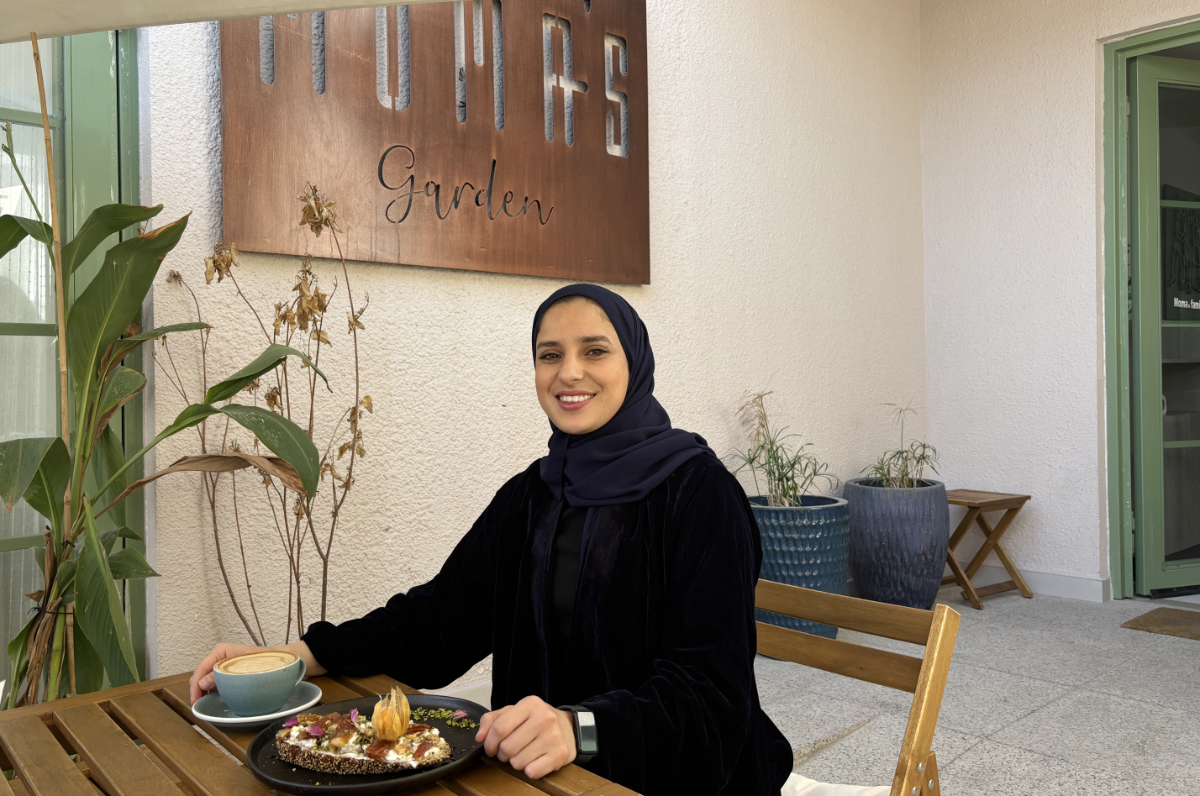
Al-Mumen said: “We select our ingredients as if we are choosing them for our own home, so that our guests feel like they are in their second home, not just any restaurant.
“We want them to feel like they are visiting us, like guests in our own house.”
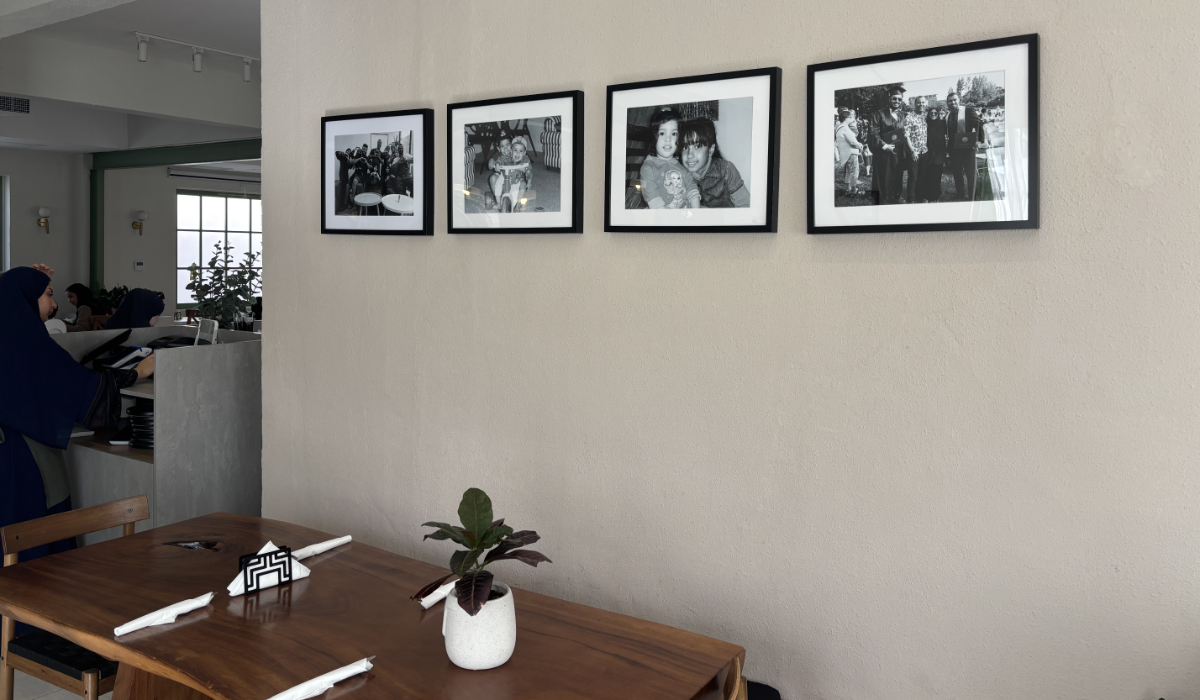
For many customers, this sense of familiarity is what keeps them coming back.
Roa Khushina, a fitness trainer and regular at the establishment, said: “I always come to Moma’s Garden — it’s honestly one of the best restaurants in Alkhobar. Their dishes are excellent, diverse, and they even offer healthy options.”
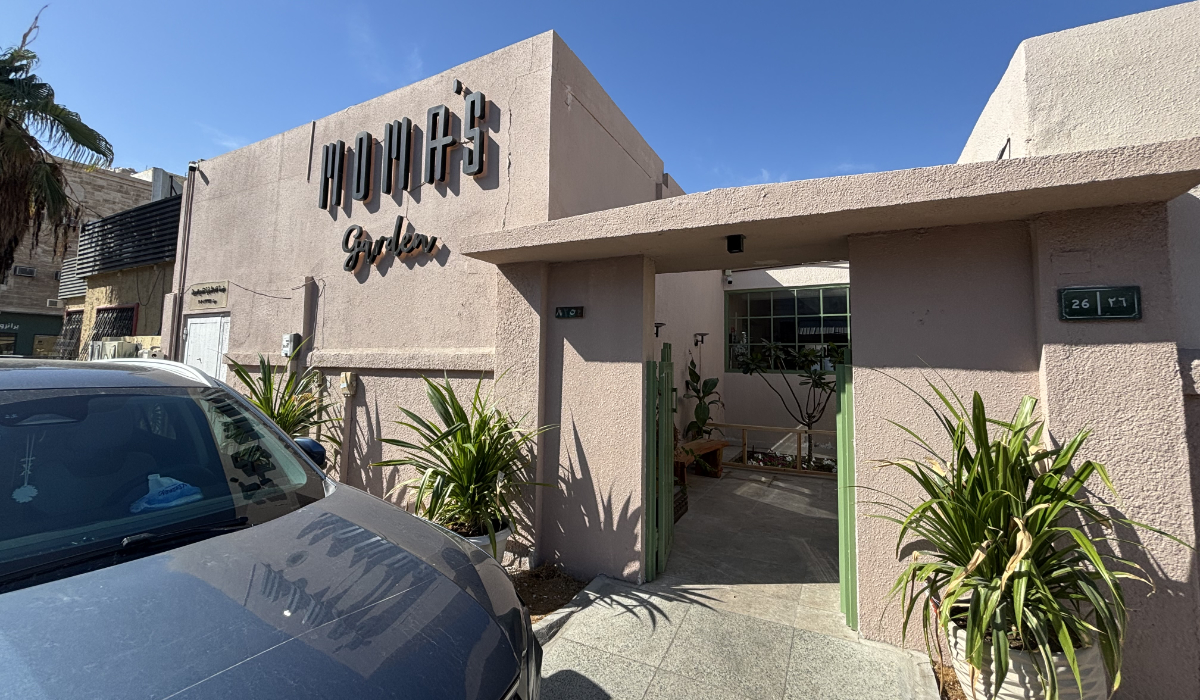
Running a restaurant as a family comes with its own challenges, particularly in hiring staff who align with the restaurant’s vision.
Hassan, the eldest son, said: “We don’t just look for employees — we look for people who fit our culture, who see this place as more than just a job. It takes us four to five months to find the right person.”
Despite occasional differences in opinion, the Al-Mumen family views these challenges as an essential part of working together and evolving the business.
“These challenges make our family stronger, and we see ourselves as partners in success,” he added.
With two established locations, the family remains committed to maintaining quality rather than expanding too quickly.
“We are not just running a business,” said Al-Mumen. “We are sharing our passion, our creativity, and our love for food. At the end of the day what matters most is that we continue to do what we love together.”
For many visitors Moma’s Garden is not just a restaurant but a place shaped by personal stories, dedication, and a deep appreciation for hospitality.

















